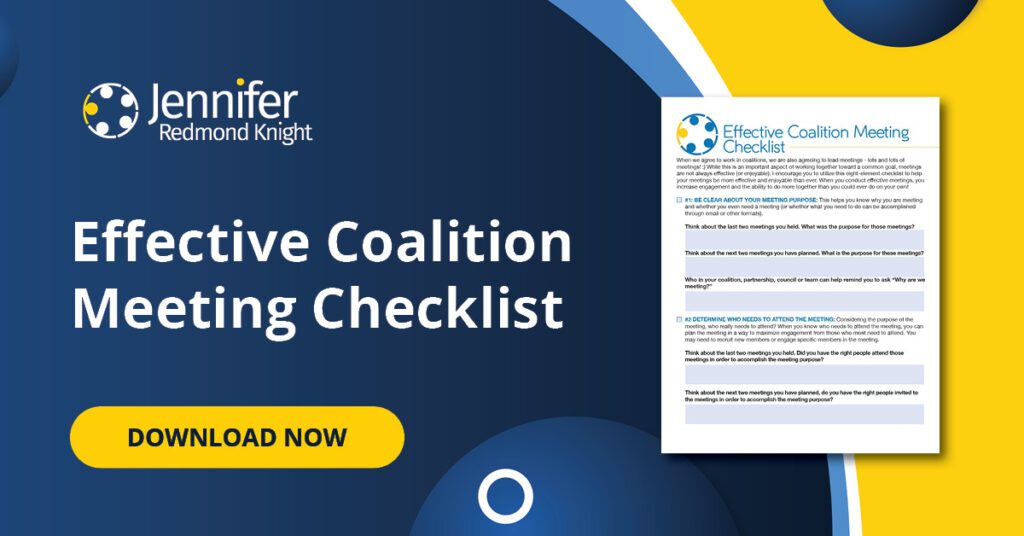When leading coalitions and partnerships, there is always the challenge of clarifying which roles staff play and which roles volunteer leaders play. Oftentimes, coalition staff want to engage volunteer leaders (e.g. co-chairs) in leading meetings but are not sure how to make it happen. Many volunteer leaders have an interest in engaging and leading but just don’t have clear direction or support on how to make that happen. So how do we actually make it happen without adding an overwhelming amount of burden to staff or volunteer leaders? Join me this week for three ideas to implement that will engage volunteer leaders in your next coalition meeting.
Co-develop meeting agenda.
When working with your teams, consider who would like to be part of developing the agenda. Remember to begin with your meeting purpose. You can begin the conversation via email or a shared document platform (e.g. Teams or google doc), clarify that everyone agrees with the meeting purpose and work on collectively filling the agenda. If you already have an agenda template, then you can begin by filling in some of the places on the agenda and asking for input on both the content of the meeting as well as the roles that the leaders may like to play during the meeting. Although they may not be interested in actually creating the agenda structure, they will often have feedback on the topics, speakers and other aspects of the meeting. By including your leaders into the agenda preparation, you are more likely to engage them during the meeting because they have ownership in the process.
Host pre-meetings.
One of the reasons that we struggle with engagement in our meetings is that we often do not take the time to prepare for the meeting alongside those we want to lead with us. If you really want to engage your volunteer leaders, spending 30-45 minutes prior to the meeting (ideally a week before the meeting) to clarify who is doing what during the meeting, will increase engagement. During this pre-meeting, you can fill out the details of your draft agenda, invite the volunteer leaders to lead certain sections of the meeting, to guide the conversation and to ask questions about the meeting. When you collectively develop a detailed flow/agenda for the meeting, then the entire group feels more comfortable about how the meeting will be implemented. This will help everyone be more engaged in leading the meeting.
Conduct after meeting debrief sessions.
When you schedule your coalition meeting, add 15 minutes after the meeting to your calendar invite for a debrief for staff and volunteer leaders. This provides an opportunity to check in with the group, consider what worked and what could be improved as well as clarifying next steps. Prompting questions could be: “What worked well?” and “What could be improved for next time?” This provides an opportunity for immediate feedback, demonstrates an interest in diverse perspectives and informs subsequent meetings. When you engage your leaders before and after the meeting and genuinely listen to their feedback, you are more likely to garner engagement in the future.
So what about you? Which of these three ideas will you start implementing with your next coalition meeting?
If you would like more support for your coalition meetings, check out my free Effective Coalition Meeting Checklist. This resource will guide you through questions to prompt you in planning your next meeting.


